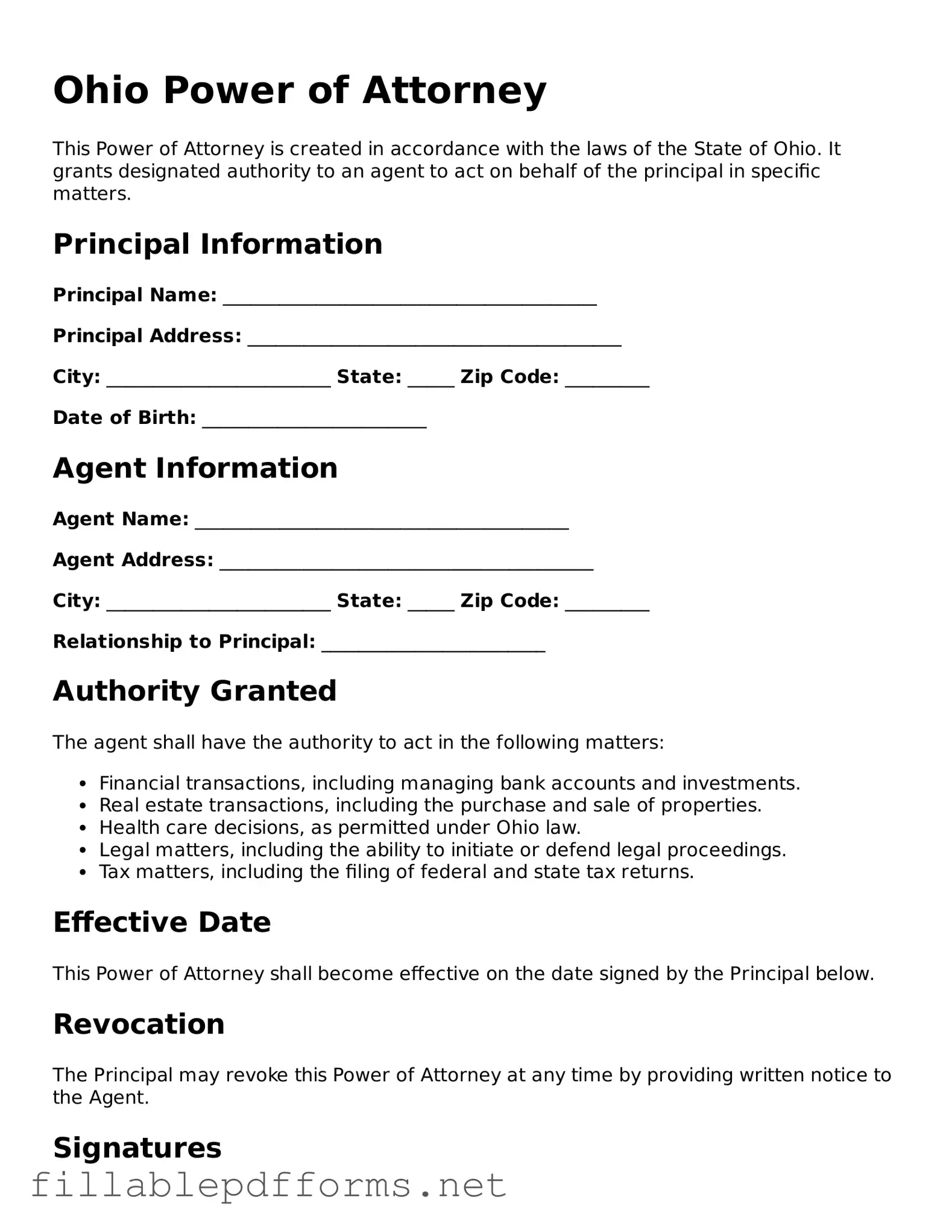Attorney-Verified Power of Attorney Form for Ohio State
The Ohio Power of Attorney form is a legal document that allows an individual, known as the principal, to designate another person, called the agent, to make decisions on their behalf. This form can cover a wide range of financial and health-related matters, providing the agent with the authority to act in the principal's best interest. Understanding the nuances of this document is essential for ensuring that one's wishes are respected and upheld.
Launch Editor Here
